Snap-on dentures are also referred to as overdentures and implant stabilized dentures. No matter which term you’re using to describe them, they all refer to the same type of prosthesis: a removable denture that snaps onto dental implants to keep it in place throughout the day.
A snap-on denture is ideal for someone who may not qualify for All-on-4 implants but wants a more secure, comfortable prosthesis to wear during the day. If you’re considering implants or want to know if there’s a middle-ground between implants and dentures, then an overdenture may be the answer that you’re looking for.
Benefits of Implant Secured Dentures
Overdentures are an affordable alternative to traditional implant treatment. Since the prosthesis that snaps onto your implants mirrors a traditional denture, it offers a lower budget option for people who may not be completely ready to invest in full-arch implant rehabilitation.
Implant stabilized dentures eliminate the need for messy pastes and gooey adhesives. They snap straight onto the corresponding dental implants and set locked in place for the day. When attached properly, there’s no rocking, slipping, or slurring to worry about.
If you’re someone who has a thin bone ridge due to tooth or bone loss, adding implants to stabilize your overdenture is a predictable way to ensure a comfortable fit. The better secured your prosthesis is, the more comfortable you’ll feel sharing meals around friends, speaking in front of your loved ones, and laughing in public. All of those seemingly natural “perks” are things that a lot of denture wearers previously took for granted.
What do the Dentures Snap Onto?
The underside of an overdenture has 2-4 locators or “snaps”. These locators are created in a way that they fit directly on top of a corresponding dental implant.
Since snap-on dentures aren’t a permanent prosthesis, you usually don’t need as many dental implants to keep them secure. Depending on whether it’s your upper or lower arch and how much bone support you have, anywhere from 2-4 implants will be needed. The lower number of implant restorations further reduces the overall investment required for this type of therapy.
Inside of your mouth, the corresponding implants will have a special type of abutment that extends just out of the top of the implant. It’s these abutments that you’ll see at the gumlines, gently protruding ever so slightly. Their unique shape allows the implant to snap in and out of the partnering locator (on your denture).
When you snap your denture into place, it looks and functions nearly identical to a conventional denture. The only difference is that there’s something underneath it to keep it in place. You don’t have to use your lips, cheeks, and tongue to keep it where it’s supposed to be. Similarly, you won’t have to keep buying an adhesive to prevent it from sliding around. Once you’ve made it through the day, simply lift the denture to unsnap it before you go to bed.
Snap-on Denture Treatment Procedure
Overdenture patients are at an advantage, in that we can partially streamline their care process. The underlying dental implants are installed similar to the way other implants are placed. But while they’re integrating, you wear your overdenture as a way to protect them as they fuse with the bone around them. A few months later (once complete bone integration has occurred), the tops of the implants are exposed and a small abutment is screwed down into a small opening on each one. The denture’s locators are calibrated with the abutments so that they snap directly onto them without much effort.
In certain situations, it may be possible to retrofit an existing denture to convert it into a snap-on denture. This is a case-by-case situation that can usually only be applied to newer dentures. Otherwise, it’s typically best to have a new denture made at the same time your implants are placed.
Adjusting to your snap-on denture takes a little practice when you’re learning how to take them in and out. But with a bit of practice, wearing your prosthesis will be similar to previous dentures you may have worn in the past.
Caring for Your Overdenture
Like traditional dentures, snap-on dentures must be removed at night while you’re sleeping. Otherwise, you run a risk of food or plaque bacteria accumulating underneath the prosthesis. When that happens, it can lead to unnecessary infections or accelerated bone loss. Obviously, you want neither! So remove your overdenture to allow your mouth to breathe and for a good cleaning.
Soak your implant denture in a gentle effervescent denture cleansing solution and allow it to sit overnight. The next morning, use a soft denture brush to thoroughly remove any residual buildup and rinse it clean.
Morning and night, clean your mouth with a clean, damp washcloth or an extra-soft toothbrush (before putting your denture in and then again after taking it out.)
“Are Snap-on Dentures Best for Me?”
Everyone’s situation is different. Some people are better candidates for snap-on dentures because they’re focused on faster and more affordable results. For those people who need a long-term fixed solution, something like All-on-4 may be more appropriate.
Keep in mind that the design of snap-on dentures will still feel like a conventional plate, so the biggest advantage is having added stability underneath. This added perk makes them ideal for people who have narrow bone in their jaws, and thus dentures that would slip or move around during the day.
Get an Honest Opinion
Archpoint Implant Dentistry is your partner in oral health and rehabilitation. When it’s time to consider the best way to replace missing teeth and improve your lifestyle, our honest and experienced implant experts will guide you through the process. From answering your questions to weighing the pros and cons of what options you have, you’ll be well prepared to move forward with the best answer for your lifestyle. To make matters easier, we offer flexible financing to make your smile makeover as convenient as possible.
Call our DFW specialists today to learn more about our snap-on dentures and implants.








